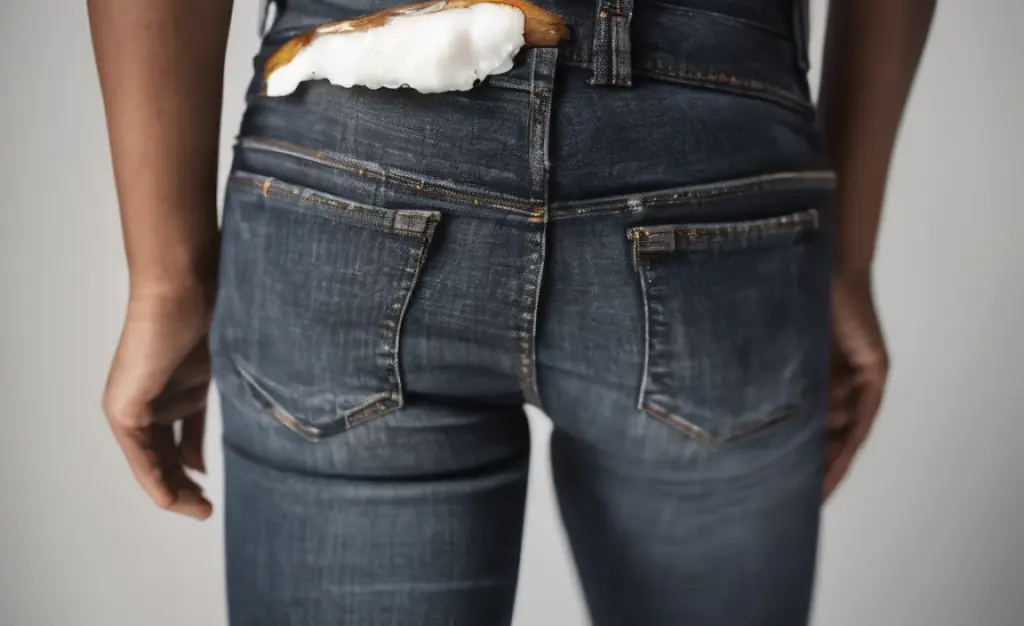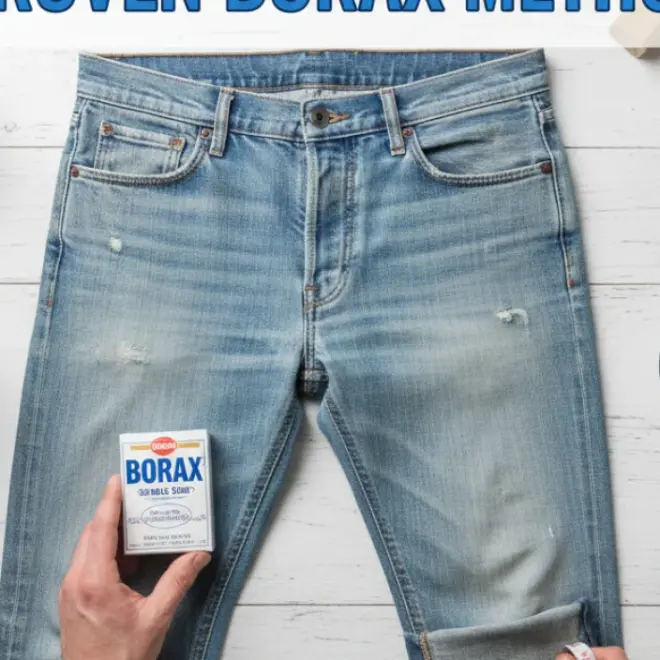Quick Summary: Easily remove coconut oil from dark wash jeans using a simple, tested method: pre-treat with dish soap, wash in cold water with detergent, and air dry. This combination effectively lifts the oily stain without damaging the dark dye.
Oh no, a stubborn oil stain on your favorite dark wash jeans! It’s a common wardrobe mishap, especially when dealing with an ingredient as versatile as coconut oil. Whether it’s from a spill during cooking, a skincare routine gone awry, or an accidental drip, seeing that slick mark on your deep blue denim can be frustrating. But don’t worry, it’s a fixable problem. With a few simple steps and some common household items, you can restore your jeans to their pristine, stain-free condition.
This guide provides a straightforward, proven method to tackle these oily spots. We’ll walk you through each step, ensuring you can confidently remove the coconut oil without fading or damaging your dark wash denim. Get ready to say goodbye to that oily patch and hello to perfectly clean jeans again!
The Science Behind Oil Stains on Denim
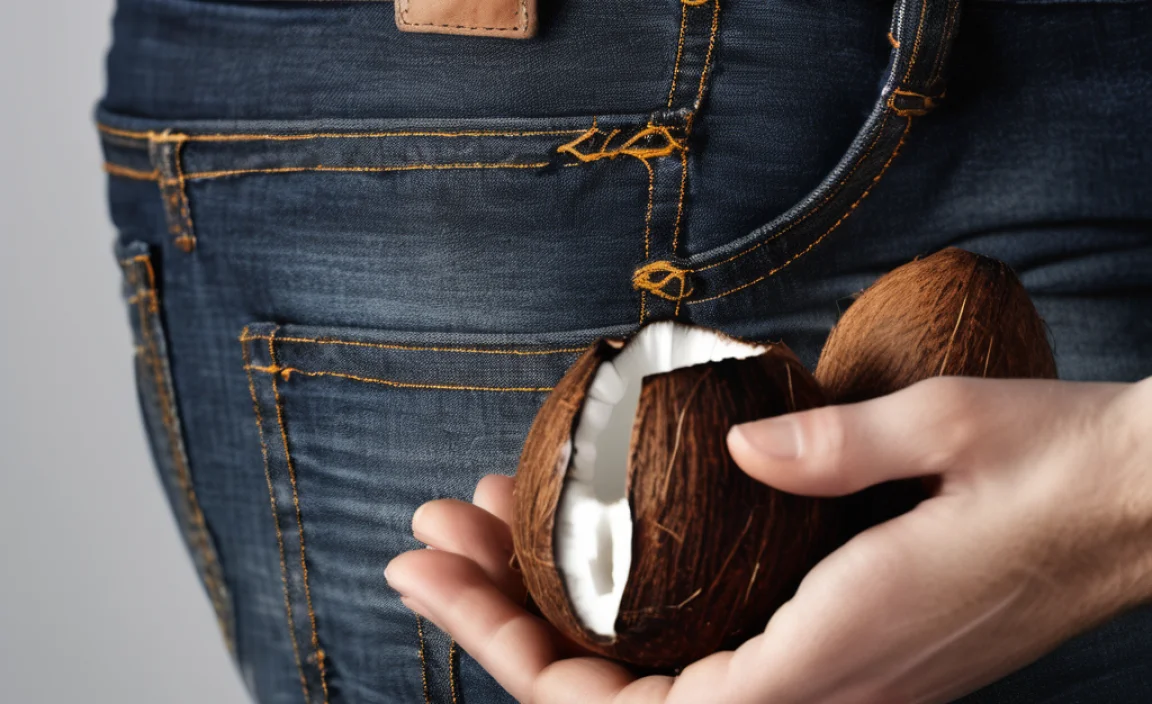
Understanding why oil stains happen and how they interact with fabric can make removal easier. Coconut oil, like other oils, is lipophilic, meaning it “loves” oil and fat. When it hits your jeans, the oil molecules penetrate the denim fibers, creating a visible mark. Dark wash jeans, with their deep indigo dye, can sometimes make oil stains appear more prominent against the dark background. However, the dyeing process of dark wash denim also means we need to be careful not to use harsh chemicals that might strip away that rich color.
The key to removing oil is to break it down and lift it from the fabric. Detergents, especially those designed to cut through grease, are excellent at this. They work by surrounding the oil molecules, making them soluble in water so they can be washed away. Cold water is often recommended for oil stains because hot water can sometimes set the stain, making it harder to remove.
What You’ll Need
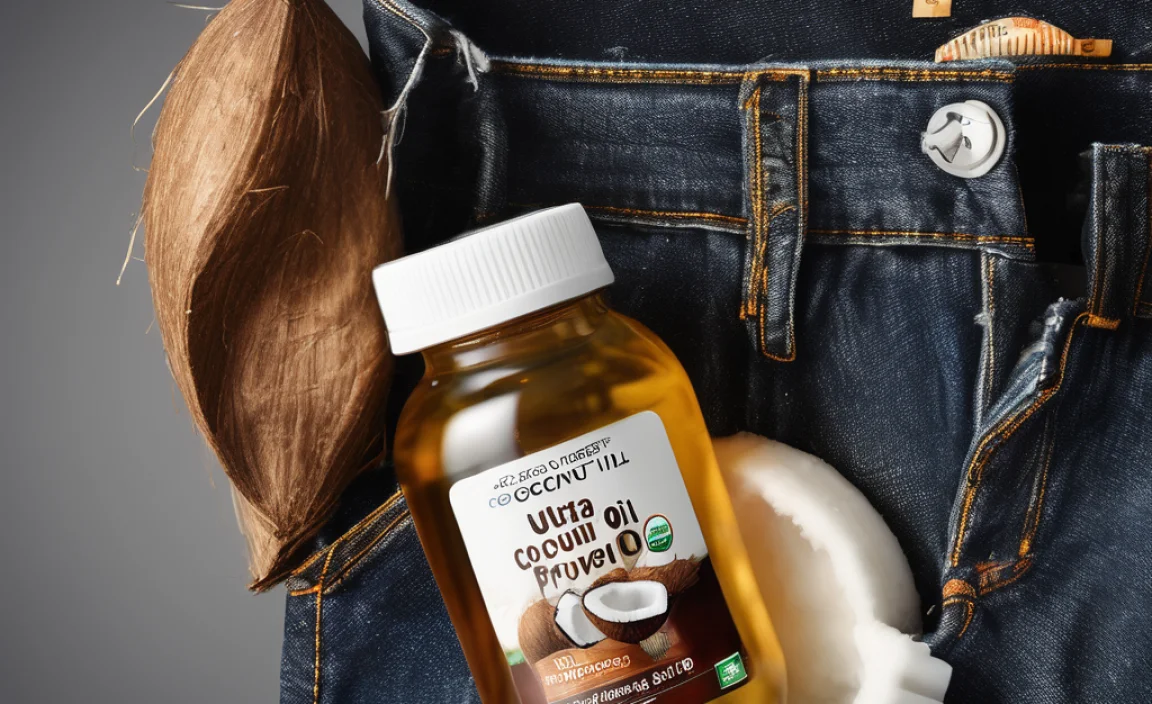
Gathering your supplies before you start will make the process smooth and efficient. You likely already have most of these items in your home.
- Liquid dish soap (a grease-cutting formula is best)
- Laundry detergent (regular or for darks)
- A soft brush (like an old toothbrush or a gentle scrub brush)
- Cold water
- A clean cloth or paper towels
Proven Method to Remove Coconut Oil From Dark Wash Jeans: Step-by-Step
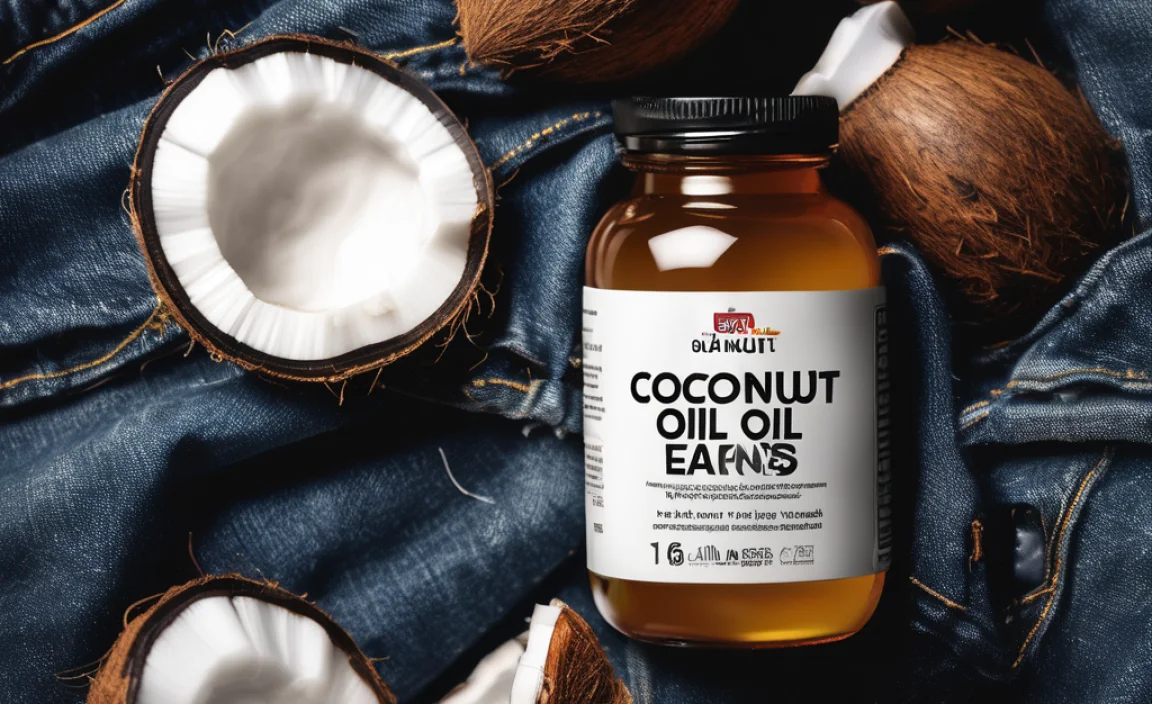
This method is designed to be gentle yet effective, protecting the color of your dark wash jeans while tackling the oil stain.
Step 1: Address the Stain Immediately (If Possible)
The sooner you can treat an oil stain, the easier it will be to remove. If the spill just happened, gently blot excess oil with a clean cloth or paper towel. Avoid rubbing, as this can spread the stain and push it deeper into the fabric fibers.
For fresh spills, you can also try sprinkling an absorbent powder like baking soda or cornstarch directly onto the stain. Let it sit for about 30 minutes to an hour to soak up as much oil as possible. Then, brush off the powder.
Step 2: Pre-Treat with Dish Soap
Liquid dish soap is formulated to break down grease, making it a superhero for oil stains. Apply a small amount of liquid dish soap directly onto the stained area of your jeans. Gently work the soap into the fabric with your fingers or a soft brush. Ensure the entire stained area is covered.
Let the dish soap sit on the stain for at least 10-15 minutes. This allows the soap to start breaking down the oil molecules, preparing them for washing. Don’t be alarmed if the area looks a bit sudsy; that’s exactly what you want.
Step 3: Rinse the Treated Area
After the dish soap has had time to work, gently rinse the pre-treated area with cold water. You can do this under a faucet or by dabbing with a damp cloth. This will help wash away some of the loosened oil and excess soap.
Check the stain. If it still looks prominent, you can repeat Step 2 and Step 3. For particularly stubborn or older stains, a second pre-treatment might be necessary.
Step 4: Wash Your Jeans
Now it’s time to get the jeans into the washing machine. Wash your dark wash jeans with your regular laundry detergent. It’s crucial to use cold water for this wash. Set your washing machine to a cold water cycle. If you have a cycle specifically for delicates or darks, that can be even better as it’s typically gentler.
Consider using a detergent specifically designed for dark clothing. These detergents often contain agents that help preserve fabric color, which is ideal for dark wash denim. Avoid using fabric softener on this load, as it can sometimes interfere with stain removal and leave a residue.
Step 5: Check the Stain Before Drying
This is a critical step! Before you put your jeans in the dryer, carefully inspect the stained area. If you can still see any trace of the oil stain, do NOT put them in the dryer. The heat from the dryer will permanently set the stain, making it much harder, if not impossible, to remove later.
If the stain is still visible, repeat Steps 2 through 4. You might need to try a slightly longer soak with the dish soap or a more intensive pre-treatment. For older or very stubborn stains, you might consider a commercial stain remover specifically designed for grease and oil, following its instructions carefully and always testing on an inconspicuous area first.
Step 6: Air Dry Your Jeans
Once you are confident that the oil stain is completely gone, you can dry your jeans. The safest and most recommended method is to air dry them. Hang your jeans on a clothesline or a drying rack and let them dry naturally. This avoids the risk of setting any residual stain with heat and is gentler on the fabric and dye of your dark wash jeans.
Avoid direct sunlight for extended periods, as it can sometimes cause dark fabrics to fade. If you must use a dryer, use a low-heat setting and check the garment frequently. However, air drying is always the preferred method after treating an oil stain.
Tips for Maintaining Dark Wash Jeans
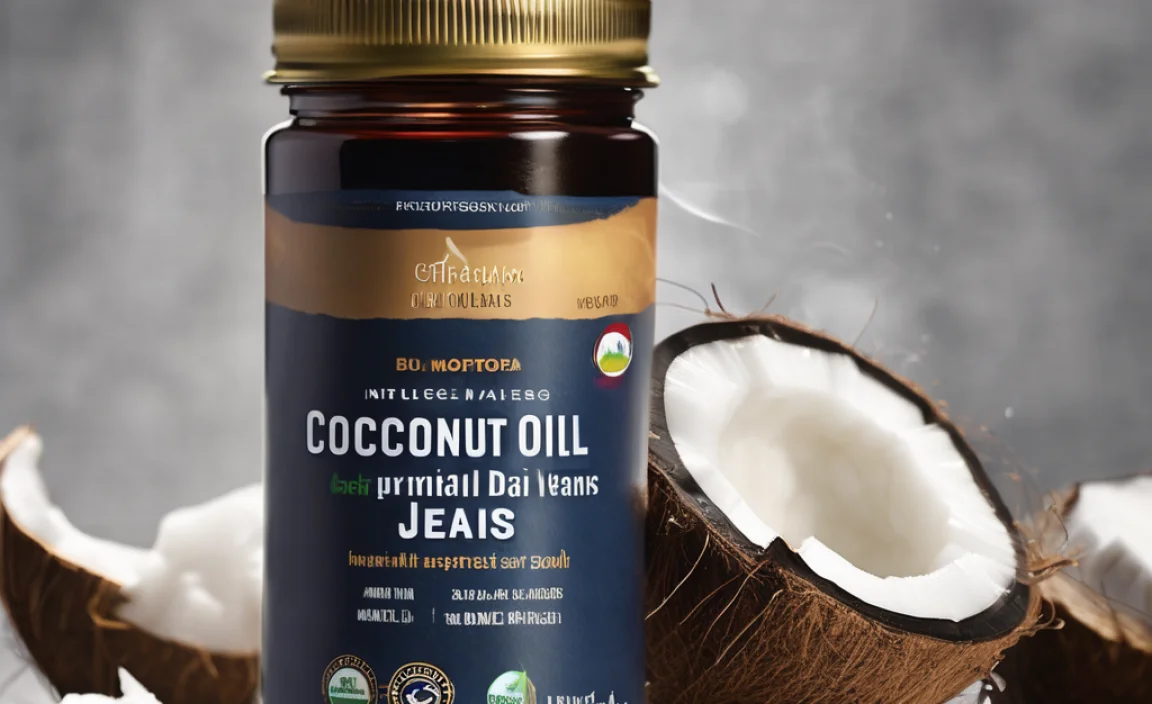
Caring for your dark wash jeans properly can extend their life and keep them looking their best, and also make stain removal easier in the future.
- Wash Less Often: Dark wash jeans are designed to be washed infrequently to maintain their colour and prevent premature fading. Spot clean minor spills when possible.
- Wash Inside Out: Always turn your dark wash jeans inside out before washing. This protects the outer dye from friction and abrasion in the washing machine.
- Use Cold Water: As we’ve emphasized, cold water is best for washing dark fabrics to help preserve the color.
- Mild Detergents: Opt for detergents that are formulated for dark colors or are otherwise mild. Avoid bleach or harsh whitening agents.
- Avoid Fabric Softener: Fabric softeners can coat fibers, potentially making stains harder to remove and can also contribute to fading over time.
- Resist Over-Drying: Remove jeans from the dryer while slightly damp or air dry them completely. Over-drying can damage fibers and set wrinkles.
Understanding Different Types of Fabric Treatments
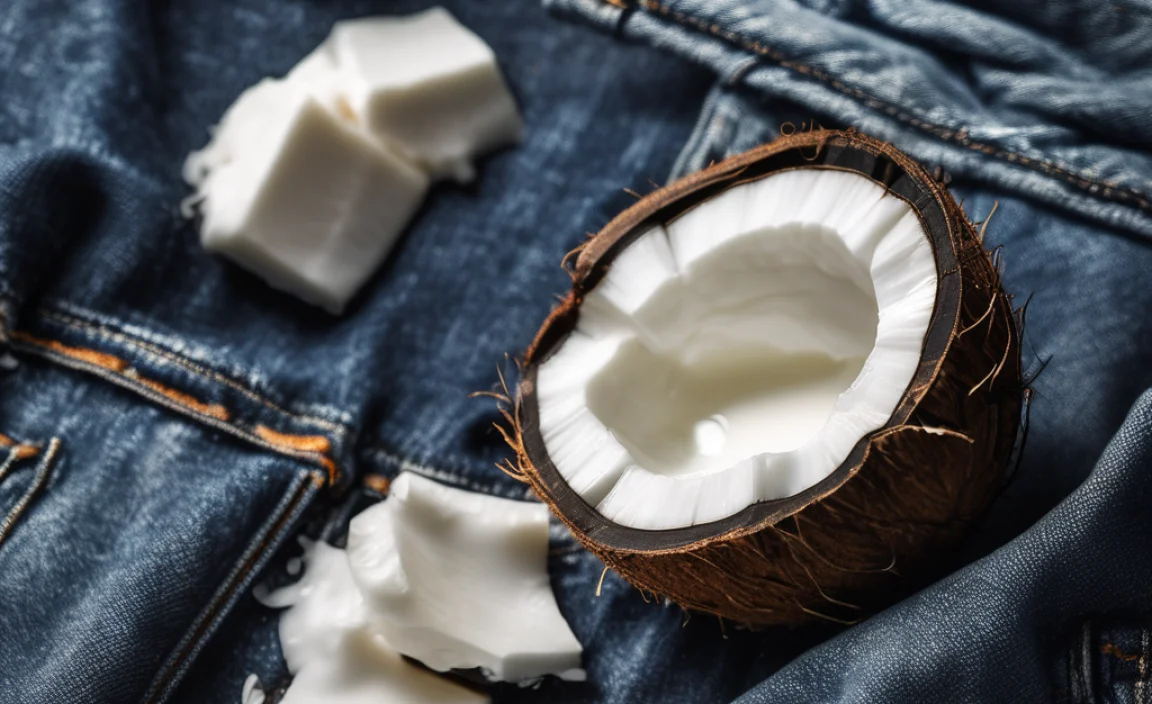
Dark wash jeans often undergo various treatments that affect how they react to stains and cleaning. Knowing these can help you understand why certain methods work better than others.
Indigo Dye: The classic dark wash look comes from indigo dye. This dye is historically applied by dipping the denim multiple times. Modern processes aim for consistency, but indigo dye can bleed, especially in the first few washes. This is why cold water and separate washes are important.
Rope Dyeing: This is a common method where the warp yarns (the yarns running lengthwise) are dyed with indigo, and then quickly washed. The core of the yarn remains white, which is why you see a lighter blue or white thread when your jeans are faded or stressed. This core is less susceptible to stains but the surface dye is what oil can penetrate.
Sanforization: Most modern jeans are sanforized, a process that pre-shrinks the denim. This makes them more stable and less prone to shrinking after the first few washes. Unsanforized denim (often found in raw denim) will shrink significantly and requires more careful washing protocols.
Washes and Finishes: Beyond the initial dyeing, jeans can undergo various washes (like enzyme washes or stonewashes) and apply finishes. These processes can affect the texture and color depth, and might also make the fabric slightly more or less absorbent to oils.
For dark wash jeans, maintaining the integrity of the indigo dye is paramount. The method described above prioritizes this by using gentle, oil-dissolving agents and cold water, minimizing the risk of color loss.
Why Dish Soap is Superior for Greasy Stains on Denim
It might seem counterintuitive to use something designed for dishes on your clothing, but dish soap is exceptionally effective against oil. Here’s why:
- Surfactants: Dish soaps contain powerful surfactants. These molecules have a hydrophilic (water-attracting) end and a lipophilic (oil-attracting) end. The lipophilic end latches onto the oil molecules in the stain, while the hydrophilic end dissolves in water. This action lifts the oil from the fabric and allows it to be washed away.
- Degreasing Power: Dish soaps are specifically formulated to cut through grease and food residue. This same degreasing power is ideal for breaking down oily substances like a coconut oil spill.
- Gentle on Many Fabrics: While powerful against grease, most reputable dish soaps are relatively mild and formulated to be safe for hands, which often translates to being safe for clothing when used as a pre-treatment. However, always check the ingredients if you have exceptionally delicate denim or a history of sensitivity.
- Accessibility: It’s a readily available item in virtually every household, making it an immediate solution without needing a special trip to the store.
When using dish soap, a small amount is usually sufficient. Over-application can lead to excessive suds in your washing machine, which can sometimes hinder the cleaning process. For more information on fabric care and stain removal, resources from university extension offices, like those provided by The Ohio State University Extension, offer comprehensive and research-backed advice.
Common Mistakes to Avoid
Even with a great method, there are a few pitfalls that can undo your efforts.
Mistake 1: Using Hot Water Initially
As mentioned, hot water can heat-set oil stains, making them permanently bond with the fabric fibers. Always start with cold water for any oil-based stain.
Mistake 2: Rubbing Vigorously
While gentle agitation with a soft brush is fine, hard scrubbing can spread the stain and damage the denim fibers, especially on dark wash items where it can create noticeable abrasion marks against the dye.
Mistake 3: Skipping the Drying Check
This is probably the most common mistake. Putting a still-stained garment into a hot dryer is the fastest way to make a stain permanent.
Mistake 4: Using Bleach on Dark Wash Jeans
Bleach is designed to strip color. It will inevitably fade or remove the dark dye from your jeans, leaving a splotchy, discolored mess. Never use bleach on dark wash denim unless you are intentionally trying to create a distressed look.
Mistake 5: Using Too Much Product
While you want to ensure the stain is covered, using excessive amounts of dish soap or detergent can lead to residue buildup and may not actually improve the cleaning power. A little goes a long way.
Alternative Stain Removal Methods (Use with Caution)
While the dish soap method is generally the most recommended for its effectiveness and fabric safety, here are a couple of other options you might consider for stubborn stains, along with important caveats.
Baking Soda Paste
How it works: Baking soda is a mild abrasive and an excellent absorbent. A paste can help lift oil from the surface and deeper within the fibers.
How to use: Mix baking soda with a small amount of water to form a thick paste. Apply the paste to the oil stain and let it dry completely. Once dry, gently brush off the residue and proceed with washing as usual.
Caution: This is generally safe for dark wash jeans, but always test on an inconspicuous area first.
Cornstarch
How it works: Similar to baking soda, cornstarch is a powerful absorbent that can draw out oil from the fabric.
How to use: Sprinkle a generous amount of cornstarch directly onto the fresh oil stain. Let it sit for several hours or overnight to absorb the oil. Brush off the cornstarch and then pre-treat the remaining stain with dish soap before washing.
Caution: Effective for fresh spills. May require multiple applications for older or larger stains.
Commercial Stain Removers
How it works: These products are specifically formulated with advanced enzymes and cleaning agents designed to tackle a wide range of stains, including oil.
How to use: Always follow the product instructions carefully. Most require you to apply the remover directly to the stain, let it sit for a specified time, and then wash as usual. Look for products labeled “grease remover” or “oil stain remover.”
Caution: Some commercial stain removers can be quite strong and may have the potential to affect darker dyes if left on too long or if they contain bleaching agents. Always perform a spot test on a hidden area of the jeans (like an inside seam) before applying to the main stain. Referencing guides like those from the University of Kentucky Cooperative Extension can provide a broader understanding of stain removal techniques that prioritize fabric care.
Remember, for dark wash jeans, the primary goal is to remove the stain while preserving the rich color. Gentle methods are always preferred.
Table: Stain Removal Efficacy Comparison (Coconut Oil on Dark Wash Jeans)
Here’s a quick comparison of common methods for tackling coconut oil stains on dark wash jeans:
| Method | Effectiveness (Coconut Oil) | Risk to Dark Wash Denim Color | Ease of Use | Availability |
|---|---|---|---|---|
| Dish Soap + Cold Wash | High | Low | High | Very High |
| Baking Soda Paste | Medium to High | Low | Medium | High |
| Cornstarch (Absorbent) | Medium (Best for fresh spills) | Very Low | High | High |
| Commercial Stain Remover | High to Very High | Medium (Depends on product) | High | High |
| Hot Water Wash (Incorrect) | Very Low | Very High (Sets stain) | N/A | Very High |
| Bleach (Incorrect) | N/A (Destroys color) | Extreme (Fades/Removes dye) | N/A | High |
Frequently Asked Questions (FAQ)
Q1: How long should I let the dish soap sit on the stain?
A: For best results, let the dish soap sit on the coconut oil stain for at least 10-15 minutes. For tougher or older stains, you can let it sit for up to 30 minutes.
Q2: Can I use regular laundry detergent for this?
A: Yes, standard laundry detergent works. However, using a detergent formulated for dark colors can offer an extra layer of protection against dye loss.
Q3: What if the stain doesn’t come out completely after the first wash?
A: Don’t put the jeans in the dryer! Repeat the pre-treatment with dish soap and wash again in cold water. You might need to repeat the process a couple of times for stubborn stains.
Q4: Is it safe to use a commercial stain remover on dark wash jeans?
A: Many commercial stain removers are safe, but it’s crucial to read the product label and always perform a patch test on an inconspicuous area of the jeans first to ensure it doesn’t affect the dye.


